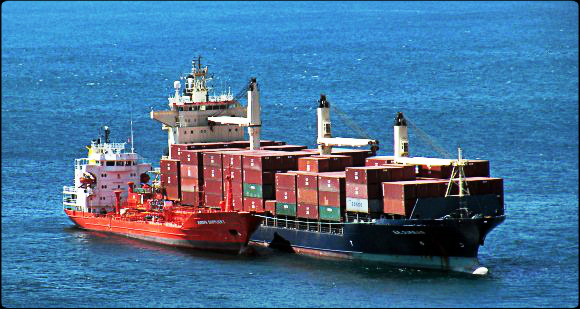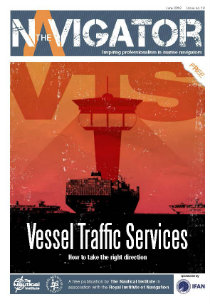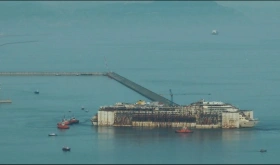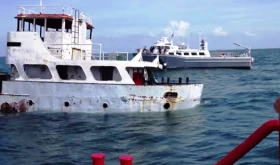A new report from Lloyd’s Register (LR) and University College London’s Energy Institute, Global Marine Fuel Trends 2030, indicates that, in all scenarios, heavy fuel oil remains the main fuel for deep sea shipping while LNG develops a deep sea bunker market share of 11% by 2030.
However Low Sulphur Fuel Oil (LSFO) and hydrogen emerge as alternatives in certain scenarios. In the most optimistic scenario for a more sustainable world, global greenhouse gas emissions from shipping decline from 2025 despite significant growth in shipping. The study shows that the combination of growth in trade and reduced emissions would require a reduction in fossil fuel dependency and the start of a transition to a zero carbon fuel like hydrogen.
The three scenarios of the report are:
- Status Quo. The world will continue its current growth momentum with some booms and busts over the next twenty years.
- Global Commons. A shift to concern over resource limitation and environmental degradation will see a desire for a more sustainable world being developed and fairness in wealth distribution. Governments will find common ground and accelerated economic growth, within a framework of sustainable development, which will follow.
- Competing Nations. States act in their own national interest. There will be little effort to forge agreement amongst governments for sustainable development and international norms. This is a self-interest and zero-sum world with a likely rise in protectionism and slower economic growth.
According to the research HFO will still be very much around in 2030, but in different proportions for each scenario:
- 47% in Status Quo
- 66% in Competing Nations
- 58% share in Global Commons (which the most optimistic of scenarios for society)
According to the study a high share of HFO, of course, means a high uptake of emissions abatement technology when global emissions regulations enter into force.
The declining share of HFO will be offset by low sulphur alternatives (MDO/MGO or LSHFO) and by LNG, and this will happen differently for each ship type and scenario. LNG will reach a maximum 11% share by 2030 in Status Quo. There is also the entry of Hydrogen as an emerging shipping fuel in the 2030 Global Commons scenario which favours the uptake of low carbon technologies stimulated by a significant carbon price.
The Global Marine Fuel Trends 2030 can be found by clicking HERE.














Leave a Comment